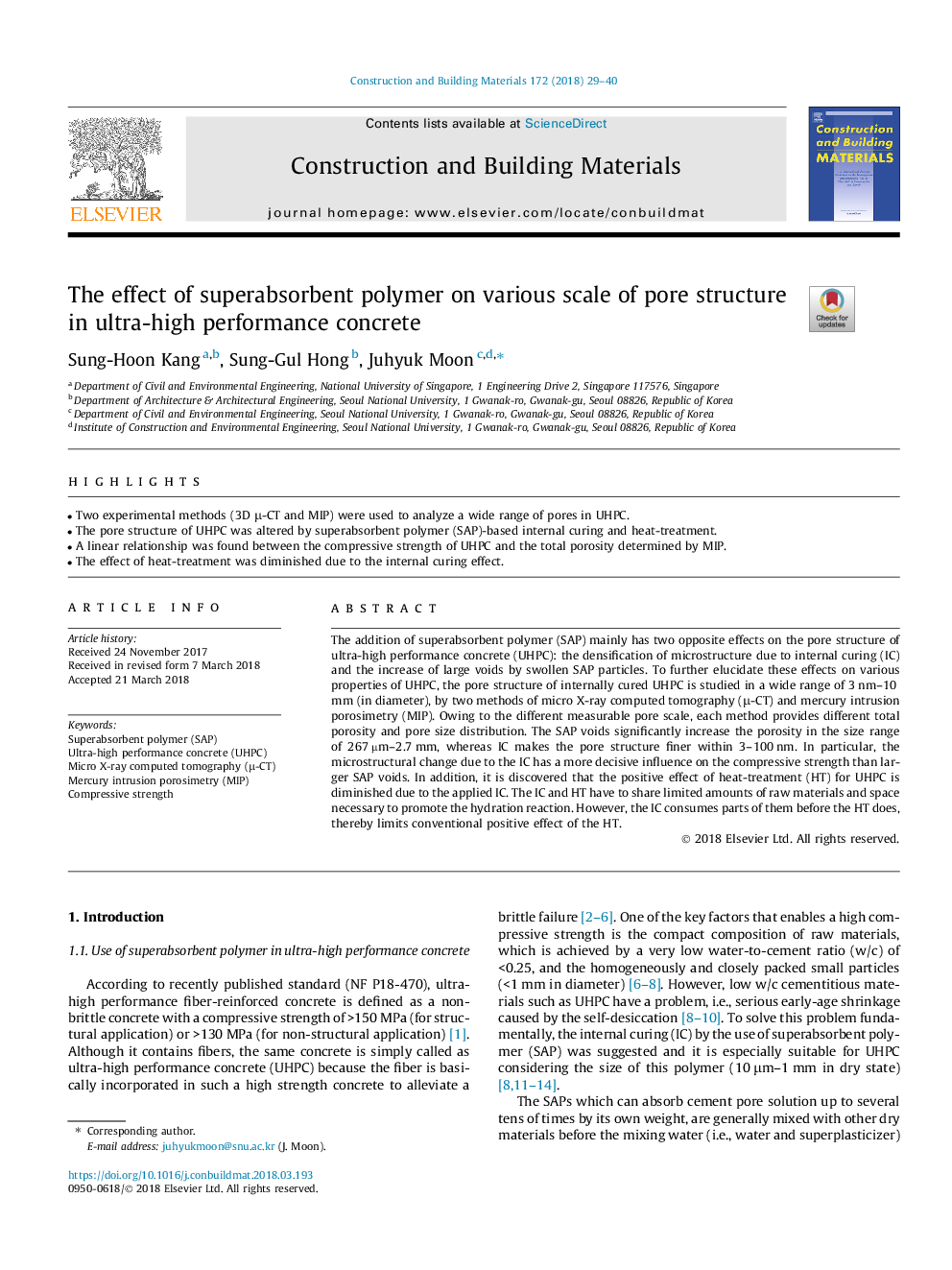| Article ID | Journal | Published Year | Pages | File Type |
|---|---|---|---|---|
| 6713698 | Construction and Building Materials | 2018 | 12 Pages |
Abstract
The addition of superabsorbent polymer (SAP) mainly has two opposite effects on the pore structure of ultra-high performance concrete (UHPC): the densification of microstructure due to internal curing (IC) and the increase of large voids by swollen SAP particles. To further elucidate these effects on various properties of UHPC, the pore structure of internally cured UHPC is studied in a wide range of 3â¯nm-10â¯mm (in diameter), by two methods of micro X-ray computed tomography (μ-CT) and mercury intrusion porosimetry (MIP). Owing to the different measurable pore scale, each method provides different total porosity and pore size distribution. The SAP voids significantly increase the porosity in the size range of 267â¯Âµm-2.7â¯mm, whereas IC makes the pore structure finer within 3-100â¯nm. In particular, the microstructural change due to the IC has a more decisive influence on the compressive strength than larger SAP voids. In addition, it is discovered that the positive effect of heat-treatment (HT) for UHPC is diminished due to the applied IC. The IC and HT have to share limited amounts of raw materials and space necessary to promote the hydration reaction. However, the IC consumes parts of them before the HT does, thereby limits conventional positive effect of the HT.
Keywords
Related Topics
Physical Sciences and Engineering
Engineering
Civil and Structural Engineering
Authors
Sung-Hoon Kang, Sung-Gul Hong, Juhyuk Moon,
